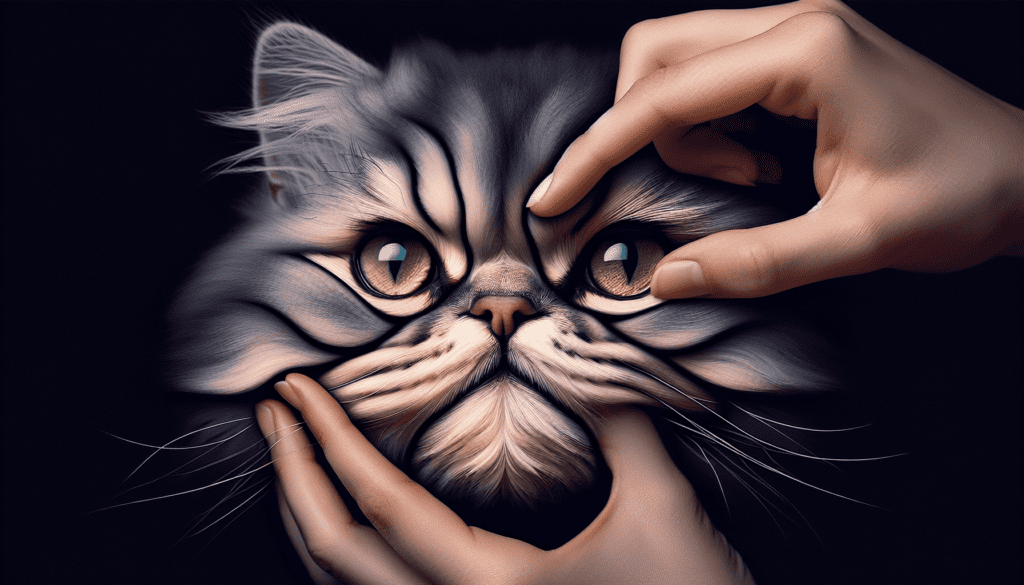Welcome to the fascinating world of Persian cats! Have you ever wondered if these beloved fluffy felines can have longer muzzles? Well, in this article, we are going to explore the question of whether or not Persian cats can indeed have longer muzzles. From their distinct characteristics to possible genetic factors, we will dive into this unique aspect of Persian cat anatomy. So sit back, relax, and get ready to learn more about these adorable and enigmatic cats. Can Persian Cats Have Longer Muzzles?
Have you ever wondered if Persian cats can have longer muzzles? Let’s dive into the world of Persian cat genetics and characteristics to understand if this is a possibility.
Understanding Persian Cat Genetics
Persian cats are known for their distinctive flat faces, round heads, and short muzzles. These characteristics are a result of selective breeding over many years. The genes responsible for these traits are what make Persian cats so unique.
Genes for Facial Structure
The genes that control the facial structure of Persian cats are complex. They involve a combination of multiple genetic factors that determine the length of the muzzle, the shape of the head, and the position of the eyes and ears. These genes are passed down from parents to offspring, influencing the appearance of each new generation of Persian cats.
Persian cats have been selectively bred for their short muzzles and flat faces, which are considered desirable traits in the show ring. Breeders have focused on maintaining these characteristics, resulting in the distinctive look that we associate with Persian cats today.
Factors Influencing Muzzle Length
While Persian cats are known for their short muzzles, there can be some variation in the length of their facial structure. This is influenced by a combination of genetic factors, environmental factors, and breeding practices.
Genetic Variation
Genetic variation plays a significant role in determining the physical characteristics of Persian cats. Some cats may inherit genes that lead to longer or shorter muzzles, depending on the traits of their parents and ancestors. This genetic variation can result in some Persian cats having slightly longer muzzles than others.
Breeding Practices
Breeding practices also play a role in shaping the appearance of Persian cats. Some breeders may focus on maintaining certain characteristics, such as shorter muzzles, while others may allow for more variation in their breeding programs. This can lead to differences in muzzle length among Persian cats, as different lines may prioritize different traits.
Environmental Factors
Environmental factors can also influence the physical characteristics of Persian cats. Factors such as diet, health, and living conditions can impact the growth and development of a cat’s facial structure. Ensuring that a Persian cat receives proper nutrition, veterinary care, and a stress-free environment can help support healthy growth and development.


Health Considerations for Persian Cats
When discussing the possibility of longer muzzles in Persian cats, it’s important to consider the potential health implications of such variations in facial structure. Different breeds of cats may be prone to certain health issues based on their physical characteristics, and Persian cats are no exception.
Brachycephalic Syndrome
Persian cats are a brachycephalic breed, meaning they have short heads and flat faces. This conformation can lead to respiratory and ocular issues, such as difficulty breathing, snoring, and eye problems. Cats with longer muzzles may be less likely to experience these issues, as they have more space for their airways and facial features.
Dental Problems
Persian cats are also prone to dental issues due to their flat faces and crowded mouths. Cats with longer muzzles may have more room for their teeth to align properly, reducing the risk of dental problems such as misalignment, overcrowding, and periodontal disease. Maintaining good dental hygiene is essential for all cats, but especially for those with brachycephalic features.
Breeding for Health and Appearance
When breeding Persian cats, it’s essential to consider both health and appearance to ensure the well-being of the cats and maintain breed standards. Balancing these priorities can be challenging, as certain traits that are considered desirable for show purposes may have negative impacts on the cat’s health.
Responsible Breeding Practices
Responsible breeders prioritize the health and welfare of their cats above all else. They conduct genetic testing, health screenings, and pedigree research to minimize the risk of hereditary health issues and maintain genetic diversity within the breed. Breeding for longer muzzles may be possible if it can be done without compromising the cat’s health and well-being.
Breed Standards
Breed standards for Persian cats dictate the ideal physical characteristics for show cats. These standards include criteria for head shape, eye color, coat length, and other traits that distinguish Persian cats from other breeds. While longer muzzles may not align with traditional breed standards, there is room for variation and evolution within the breed.
Consulting with Veterinarians
Before making any decisions about breeding practices or altering the physical characteristics of Persian cats, it’s essential to consult with veterinarians and breed experts. They can provide guidance on the health implications of such changes and offer advice on how to maintain the well-being of the cats while preserving the breed’s unique traits.


Conclusion
In conclusion, while Persian cats are known for their short muzzles and flat faces, there is some variation in facial structure within the breed. Genetic factors, breeding practices, and environmental influences can all contribute to differences in muzzle length among Persian cats. When considering the possibility of longer muzzles in Persian cats, it’s crucial to prioritize the health and well-being of the cats above all else. By breeding responsibly and seeking guidance from veterinarians and experts, breeders can work towards maintaining the unique characteristics of Persian cats while ensuring they remain healthy and happy.

